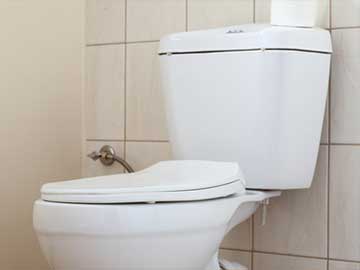
Most of us don’t think about how much water is used every time we flush a toilet. Just so you know, on avearge it accounts for about 38% of the water used indoors in an average home.
For anyone who is looking to save money on their water bill – the use of low flow toilets is a great option. It’s been such a success that since 1992 – laws have been put in place in the USA that mandates that all new toilets sold in the USA be low flow or low flush.
The difference in the amount of water used by standard toilets vs. these newer low flow / low flush models is…
- Standard toilets use between 3.5 to 7 gallons of water per flush
- Low flow / low flush toilets use about 1.6 gallons of water per flush
As you can see, the savings can be quite extensive, especially if you have several individuals living in the house.
The Two Types Of Low Flow Toilets
There are two types of low flow toilets in the USA.
- Gravity Fed
- Pressure Assisted
The Gravity Fed toilets are the most common that you will find in most hardware stores and new homes.
The Pressure Assisted toilets are usually seen in restaurants, airports and other commercial settings but it is not necessarily uncommon to see them in residential homes as well.
How Do Gravity Fed Low Flow Toilets Work?
Gravity Fed toilets are work very much like a standard toilet. When the user pushes down on the handle lever, the flushing valve is lifted which allows water to move from the tank to the bowl to flush the waste in the toilet.
How Do Pressure Assisted Low Flow Toilets Work?
When the user flushes a pressure assisted toilet, compressed air in the tank is released which in turn releases pressure that forces the waste in the bowl to be flushed. It usually looks and sounds like a little explosion of water and the flush is very quick.
So, which type of low flow toilet should you choose? Well, boh do the job very well – but to make a decision it helps to know the pros and cons of each type.
Pros and Cons of Gravity Fed Models
Pro – very durable and reliable
Pro – parts are inexpensive and easily found / purchased in most any hardware store
Con – may not have a strong enough flush for heavy usage OR if the sewer pipe from the toilet to the city sewer system or your septic tank runs upwards
Pros and Cons of Pressure Assisted Models
Pro – very strong pressure makes it a good model for heavy usage OR if your sewer pipe runs upwards to the city sewer or your septic tank
Pro – no freestanding water in the bowl (so if you accidentally drop your cell phone in the toilet it won’t get wet)
Con – usually has a very loud noise when flushed
Con – your home’s water supply system needs to produce a minimum of 25 pounds-force per square inch for this toilet to work properly
Con – if your home has old pipes, the pressure produced by this toilet may damage those pipes
Differences Between Regular vs. Low Flow Toilets
The differences in how low flow toilets are constructed and function explain how they work.
- The outlet in a regular toilet bowl is near the rear of the bowl whereas in a low flow toilet, it’s near the center of the bowl. This change in location helps to use less water per flush.
- The water line in a regular toilet is closer to the drain in the bowl but in the low flow toilet, the water line is closer to the front of the bowl.
- The flush valve in a low flow toilet is larger than the flush valves in regular toilets. This makes it much easier to create a stronger water flow in the low flow toilets.
If you have any questions about low flow toilets, call Atlantis Plumbing today at 770-505-8570. We are available 24 hours a day, 7 days a week.